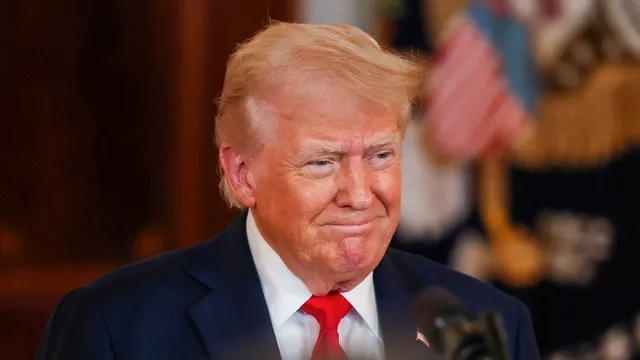
Trump imposes 145% tariffs on Chinese imports amid trade tensions
2025-05-08 00:00- The Trump administration announced significant tariffs against both foreign imports and specifically against China on April 2, 2025.
- China responded with its own increased tariffs on U.S. goods, leading to predictions of substantial job losses in China.
- Upcoming trade negotiations between the U.S. and China may influence the future of these tariffs and international trade stability.
Express your sentiment!
Insights
The United States has been involved in escalating trade tensions with China, marked by the imposition of steep tariffs by both nations. On April 2, 2025, the Trump administration announced sweeping tariffs on a broad range of foreign goods, specifically targeting China with import taxes that reached as high as 145%. In retaliation, China imposed its own tariffs, raising duties on U.S. products up to 125%. These moves have provoked significant economic concern, with projections suggesting job losses in the millions for China and rising market volatility worldwide. Negotiations between U.S. officials and their Chinese counterparts have been scheduled to attempt de-escalation of the ongoing trade war, with high-level talks set for May 9-12 in Switzerland. Treasury Secretary Scott Bessent will represent the U.S., while China will be represented by Vice Premier He Lifeng. The expectation is that these discussions will focus on reducing tariff tensions, though skepticism remains regarding their success due to differing national interests. As negotiations loom, both sides have expressed their positions clearly: President Trump has signaled that he is unwilling to reduce tariffs and expects a fair deal without compromising his stance first. On the other hand, China has insisted on the need for the U.S. to lift tariffs as a prerequisite for serious discussions, reflecting deep-rooted economic and political divides. The outcomes of these talks are critical as global markets await signs of stability amid these recurring tariff disputes. The current state of affairs has raised alarms among investors and businesses that depend on trade between the two nations, highlighting the potential for broader economic disruptions if the trade war continues to escalate. With the stakes so high, the situation remains fluid, and stakeholders from both countries are closely monitoring the interactions to gauge the likelihood of progress towards a resolution.
Contexts
The history of China-U.S. trade relations has evolved significantly since the late 20th century, reflecting broader geopolitical dynamics and economic strategies. Initially, in the late 1970s and early 1980s, the relationship began to shift as China initiated economic reforms under Deng Xiaoping, moving towards a market-oriented economy. The establishment of diplomatic relations in 1979 marked a new era, with the United States recognizing the People's Republic of China. This paved the way for increasing trade ties, contributing to China's integration into the global economy. By the 1990s, trade surged, with the U.S. granting China permanent normal trade relations (PNTR) in 2000, facilitating China’s entry into the World Trade Organization (WTO) in 2001. This agreement was a pivotal moment, as it allowed China to significantly increase its exports, and the U.S. benefitted from access to a vast market for its goods and services. The early 21st century was characterized by rapid economic growth in China, leading to a trade imbalance that became a point of contention. By the late 2000s, the U.S. began to voice concerns over issues such as intellectual property theft, currency manipulation, and unfair trade practices. Economic interactions became increasingly complex as both nations recognized the interdependence of their economies while simultaneously grappling with competitive tensions. The global financial crisis of 2007-2008 amplified these challenges, as both countries navigated the shifting dynamics of recovery. Amid these tensions, trade escalated further, with China becoming the largest trading partner of the U.S. by 2015, but calls for reform in trade policies continued to intensify. In 2018, the trade relationship took a significant turn with the onset of the United States-China trade war, marked by mutual tariffs and a series of negotiations aimed at addressing long-standing grievances. The U.S. administration accused China of engaging in unfair trade practices, while China retaliated with tariffs, creating a ripple effect across global markets. This period underscored the fragility of trade relations and heightened nationalistic sentiments in both countries. Despite various rounds of negotiations and the signing of a Phase One trade deal in January 2020, which included commitments from China to purchase U.S. goods, many structural issues remained unresolved, keeping tensions alive. As of 2025, the landscape of China-U.S. trade relations continues to evolve against a backdrop of geopolitical rivalries, particularly in areas like technology and regional security. Both countries grapple with their roles in a multipolar world while managing their economic interdependence. The broader implications of these trade relations affect not just bilateral ties but also global economic stability and trade practices. Moving forward, a comprehensive understanding of these dynamics is crucial, as it will shape the future of international trade policies and economic cooperation.